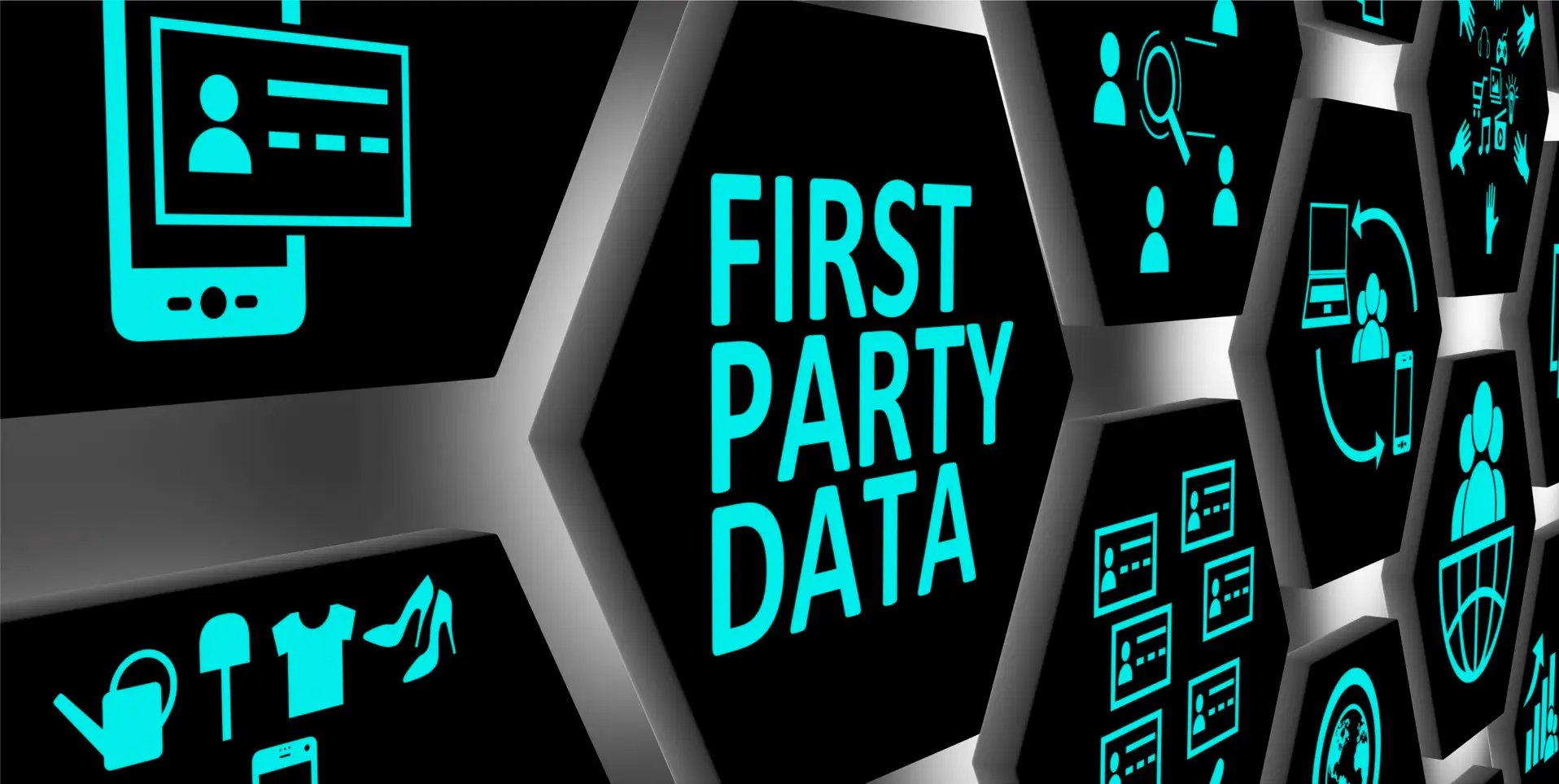
With the impending end of third-party cookies, now is the optimal time to shift focus towards collecting first-party data.
Third-party cookies are data snippets saved on a user's device during website visits. Google's initiative to eliminate third-party cookies aims to uphold user privacy and grant users more authority over their data.
In light of this, first-party data will emerge as a vital asset for businesses. This data encompasses all customer interactions, actions, and feedback, originating from sources like website visits, purchase histories, online surveys, and other platforms.
Leveraging first-party data enhances targeted lead-generation efforts, especially for B2B and B2C entities, allowing for customized experiences and fostering closer customer relationships.

What is First-Party Data?
First-party data pertains to the information your company directly collects from its audience, which includes customers, social media enthusiasts, and website visitors. This data is procured directly through engagement on your brand's platforms.
This data can comprise demographic details such as age, gender, location, and interests, along with behavioral insights like purchase activity and page visits. The dataset extends to CRM data, social media interactions, survey results, and online chat records.
Prioritizing privacy, the digital landscape is veering towards a cookieless future, intensifying the need for businesses to accrue first-party data. As advertising channels evolve in alignment with privacy concerns, businesses must adapt their marketing strategies. However, first-party data emerges as a potent tool to counteract the challenges of diminishing cookies and ad targeting capacities.

Why First-Party Data Matters?
1. Owning Marketing Contacts
Owning contacts, those who willingly disclose personal data, facilitates deeper customer relationships and amplifies communication effectiveness.
2. Crafting Purposeful Marketing
Reliable first-party data with effective data analytics can help paint a vivid portrait of your audience's inclinations, facilitating targeted, resonant marketing endeavors.
3. Leveraging First-Party Data in Lead Generation
Harnessing first-party data in lead generation campaigns across platforms like Google, YouTube, Facebook, and Instagram can boost effectiveness substantially, as much as 50% campaign improvement.
For instance, on Google's ad platforms:
- Audience Segmentation: Craft precise audience segments based on first-party data for more tailored campaigns.
- Remarketing Lists: Use first-party data to design remarketing lists, targeting previous website visitors.
- Customer Match: Utilize Google's feature to target or exclude customers based on uploaded email lists.
- Lookalike Audiences: Identify potential leads resembling existing customers.
- Ad Personalization: Customize ads based on first-party data insights.
Similarly, on Facebook and Instagram, first-party data can be leveraged:
- Custom Audiences: Target or re-engage past customers using uploaded customer data.
- Lookalike Audiences: Reach potential leads resembling your current audience.
- Ad Personalization: Craft resonant ads based on audience preferences.
- Retargeting Campaigns: Re-engage users based on their buying journey stage.
- Dynamic Ads: Display relevant products to interested users.
Case Studies:
Cluey Learning
Online tutoring startup Cluey Learning helps parents find individualized school support for their children.
The Cluey team used first-party customer data with Google’s Customer Match feature to ensure the reach customers, re-engage with them, and find new customers like them across Search, Shopping, Gmail, YouTube, and Display.
Customer Match helps you reach custom segments of your existing customers and deliver a tailored message when it’s most relevant to them by uploading first-party customer data, which we use to match against Google users.
This approach also helped Cluey efficiently reach qualified potential customers with campaigns relevant to their needs.
With Customer Match, Cluey could reach parents who had previously inquired about and provided information to Cluey by serving them ads that showcased solutions tailored to their education goals.
Through this strategy, Cluey was able to increase the effectiveness of ads seen by those audiences by 190%, while decreasing the cost of conversions by 17%.
Case Studies:
Agicap
In an increasingly competitive market, Agicap struggled to break through the noise. The company knew its cash management software could help small businesses overcome their cash flow challenges, but the space was swamped with online ads from competitors trying to reach the same audience. Rather than continue to cast a wide net, the brand decided to nurture high-intent leads in its sales pipeline.
By utilizing first-party data Agicap sent conversion signals based on its existing prospects’ life cycle stages to Google. The company was then able to use Google’s Customer Match feature to reengage its qualified leads with relevant ads and bid higher toward this core audience.
These changes resulted in a 10% increase in conversions and a 15% increase in revenue growth — all while containing costs.
Conclusion
First-party data equips businesses with a profound understanding of their clientele. Utilizing this data, companies can craft detailed customer personas, ensuring digital lead-generation strategies are both precise and potent.
By integrating personalized marketing, businesses can forge robust customer relationships and heighten conversion probabilities.
In the evolving digital landscape, cultivating relationships with clients and the community is paramount. First-party data empowers brands to craft impactful marketing, unhindered by tech giant algorithms.

